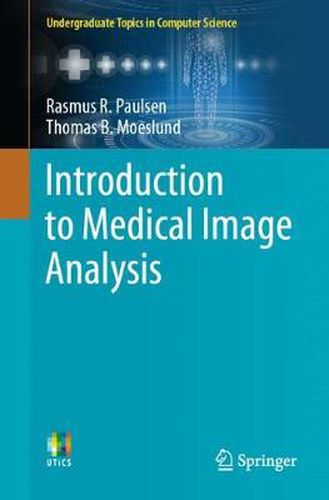Readings Newsletter
Become a Readings Member to make your shopping experience even easier.
Sign in or sign up for free!
You’re not far away from qualifying for FREE standard shipping within Australia
You’ve qualified for FREE standard shipping within Australia
The cart is loading…






This title is printed to order. This book may have been self-published. If so, we cannot guarantee the quality of the content. In the main most books will have gone through the editing process however some may not. We therefore suggest that you be aware of this before ordering this book. If in doubt check either the author or publisher’s details as we are unable to accept any returns unless they are faulty. Please contact us if you have any questions.
This easy-to-follow textbook presents an engaging introduction to the fascinating world of medical image analysis. Avoiding an overly mathematical treatment, the text focuses on intuitive explanations, illustrating the key algorithms and concepts in a way which will make sense to students from a broad range of different backgrounds.
Topics and features: explains what light is, and how it can be captured by a camera and converted into an image, as well as how images can be compressed and stored; describes basic image manipulation methods for understanding and improving image quality, and a useful segmentation algorithm; reviews the basic image processing methods for segmenting or enhancing certain features in an image, with a focus on morphology methods for binary images; examines how to detect, describe, and recognize objects in an image, and how the nature of color can be used for segmenting objects; introduces a statistical method to determine what class of object the pixels in an image represent; describes how to change the geometry within an image, how to align two images so that they are as similar as possible, and how to detect lines and paths in images; provides further exercises and other supplementary material at an associated website.
This concise and accessible textbook will be invaluable to undergraduate students of computer science, engineering, medicine, and any multi-disciplinary courses that combine topics on health with data science. Medical practitioners working with medical imaging devices will also appreciate this easy-to-understand explanation of the technology.
$9.00 standard shipping within Australia
FREE standard shipping within Australia for orders over $100.00
Express & International shipping calculated at checkout
This title is printed to order. This book may have been self-published. If so, we cannot guarantee the quality of the content. In the main most books will have gone through the editing process however some may not. We therefore suggest that you be aware of this before ordering this book. If in doubt check either the author or publisher’s details as we are unable to accept any returns unless they are faulty. Please contact us if you have any questions.
This easy-to-follow textbook presents an engaging introduction to the fascinating world of medical image analysis. Avoiding an overly mathematical treatment, the text focuses on intuitive explanations, illustrating the key algorithms and concepts in a way which will make sense to students from a broad range of different backgrounds.
Topics and features: explains what light is, and how it can be captured by a camera and converted into an image, as well as how images can be compressed and stored; describes basic image manipulation methods for understanding and improving image quality, and a useful segmentation algorithm; reviews the basic image processing methods for segmenting or enhancing certain features in an image, with a focus on morphology methods for binary images; examines how to detect, describe, and recognize objects in an image, and how the nature of color can be used for segmenting objects; introduces a statistical method to determine what class of object the pixels in an image represent; describes how to change the geometry within an image, how to align two images so that they are as similar as possible, and how to detect lines and paths in images; provides further exercises and other supplementary material at an associated website.
This concise and accessible textbook will be invaluable to undergraduate students of computer science, engineering, medicine, and any multi-disciplinary courses that combine topics on health with data science. Medical practitioners working with medical imaging devices will also appreciate this easy-to-understand explanation of the technology.